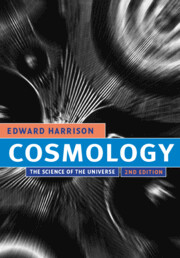Book contents
- Frontmatter
- Contents
- Preface
- Introduction
- PART I
- 1 What is cosmology?
- 2 Early scientific cosmology
- 3 Cartesian and Newtonian world systems
- 4 Cosmology after Newton and before Einstein
- 5 Stars
- 6 Galaxies
- 7 Location and the cosmic center
- 8 Containment and the cosmic edge
- 9 Space and time
- PART II
- PART III
- Appendix – Fundamental quantities
- Index
9 - Space and time
from PART I
Published online by Cambridge University Press: 05 June 2012
- Frontmatter
- Contents
- Preface
- Introduction
- PART I
- 1 What is cosmology?
- 2 Early scientific cosmology
- 3 Cartesian and Newtonian world systems
- 4 Cosmology after Newton and before Einstein
- 5 Stars
- 6 Galaxies
- 7 Location and the cosmic center
- 8 Containment and the cosmic edge
- 9 Space and time
- PART II
- PART III
- Appendix – Fundamental quantities
- Index
Summary
I do not define time, space, place and motion, as being well known to all.
Isaac Newton (1642–1726), PrincipiaOur knowledge of time as of space owes more to the labours of mathematicians and physicists than to those of professional philosophers.
C. D. Broad (Philosophy, 1938)SPACE
Dressed and undressed space
From the Heroic Age of Greece until modern times we see the development, side by side, of two views on the nature of space: “dressed space” and “undressed space.”
Space as a void – undressed, existing in its own right, independent of the things it contains – was at first a lofty abstraction that many persons could not take seriously. It seemed more natural to think of space as dressed and made real with a continuous covering of material and ethereal substances. Aristotle, who believed in dressed space, regarded the notion of a vacuum as nonsense and said that a vacuum is nothing and what is nothing does not exist. This enabled him to argue in favor of a finite universe. The ether – the fifth element – ended at the sphere of fixed stars. Beyond the sphere of stars, because there was no ether, there could be no space. At first this was the view of scholars in the Middle Ages who later succeeded in extending space beyond the sphere of fixed stars by inhabiting it with God.
- Type
- Chapter
- Information
- CosmologyThe Science of the Universe, pp. 169 - 186Publisher: Cambridge University PressPrint publication year: 2000

